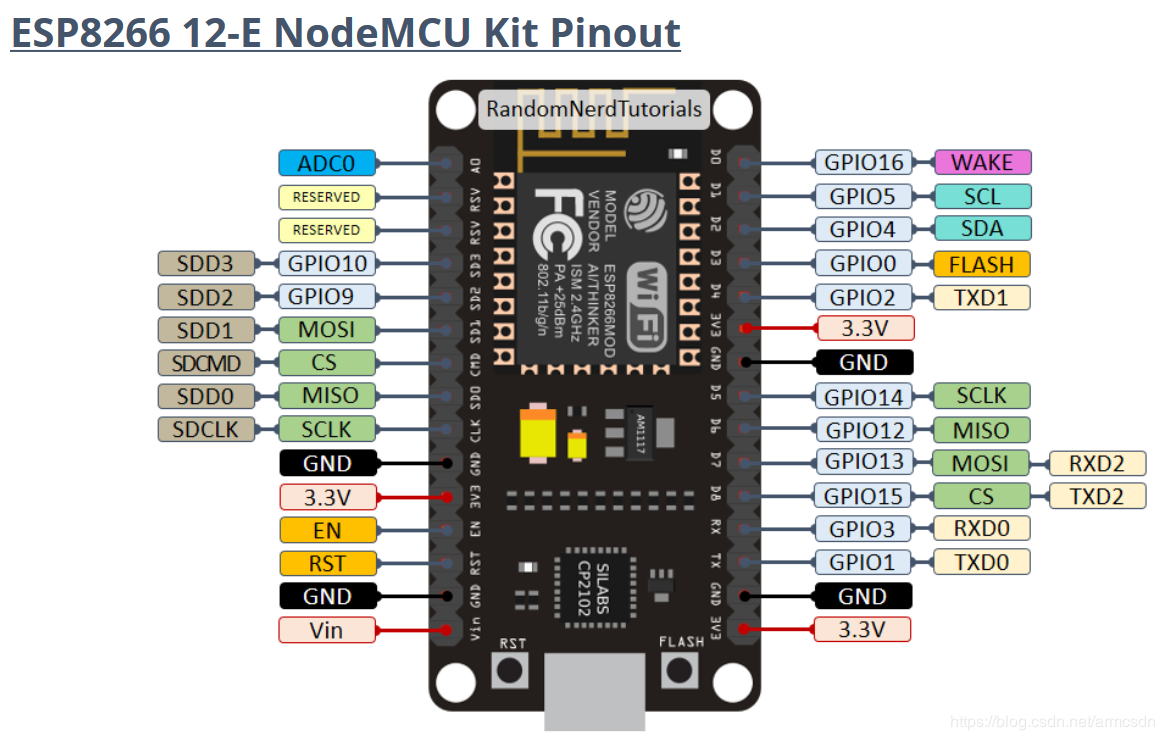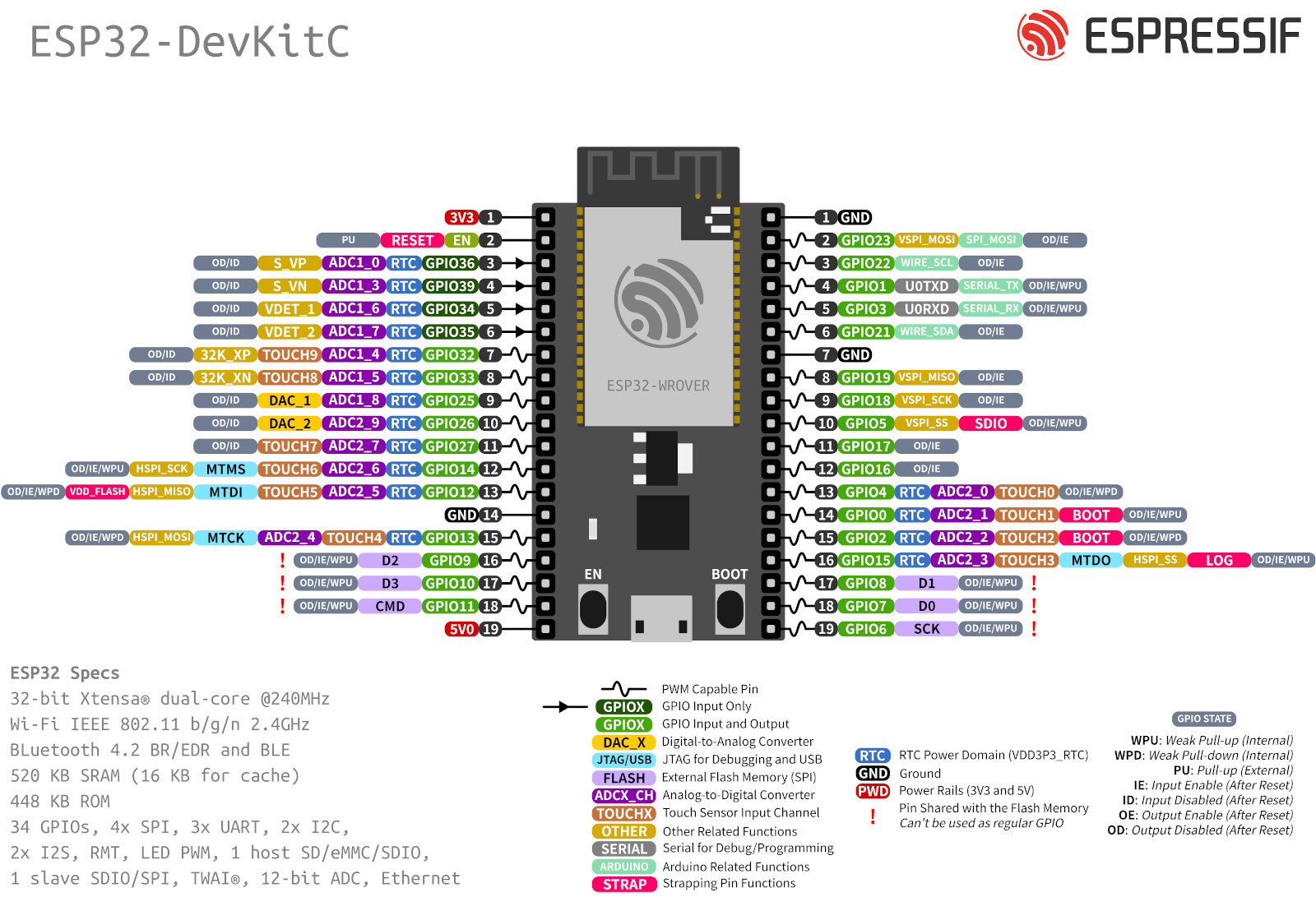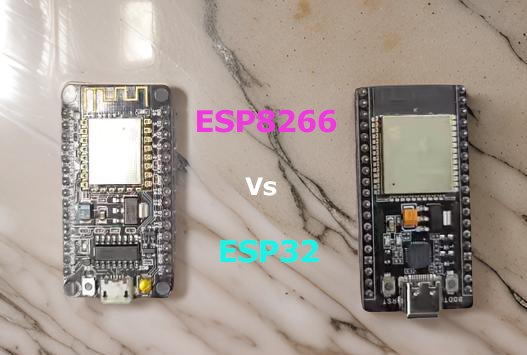In the world of Internet of Things (IoT) development, the ESP8266 and ESP32 are two of the most popular Wi-Fi modules available. Both are powerful, cost-effective, and widely used by hobbyists and professionals alike. While both belong to the 32-bit processor family, they differ significantly in design and functionality. This article will provide a detailed comparison of the two chips to help developers make an informed choice based on their project needs.
Overview
What is ESP8266?
Released in 2014, the ESP8266 is a low-cost Wi-Fi chip with an integrated TCP/IP stack. It features a 32-bit single-core processor that runs at 80MHz (with overclocking potential up to 160MHz) and supports Wi-Fi standards 802.11 b/g/n. The ESP8266 has 17 GPIO pins that can control LEDs, buttons, sensors, and other peripherals. It also supports various communication protocols such as SPI, I2C, UART, ADC, DAC, and PWM, making it versatile for simple IoT applications.
ESP8266 Pinout
The ESP8266 offers 17 GPIO pins. These pins can be used for various functions, including controlling LEDs, buttons, sensors, and other peripherals. It supports several protocols, including SPI, I2C, and UART, although the pinout is less flexible than the ESP32.

What is ESP32?
The ESP32 is an upgraded version of the ESP8266, offering a dual-core processor with a clock speed of up to 240MHz. It integrates both 2.4GHz Wi-Fi and Bluetooth 5.0, providing greater flexibility for IoT applications. With up to 40 GPIO pins and support for various communication protocols, including SPI, I2C, UART, I2S, and PWM, the ESP32 is designed for more complex and feature-rich projects. Additionally, it offers better power management and security features compared to the ESP8266.
ESP32 Pinout
In contrast, the ESP32 provides up to 40 GPIO pins, offering much more flexibility in terms of pin configuration. It supports multiplexing, meaning pins can be assigned different functions as needed. This makes the ESP32 much more adaptable for complex applications that require a variety of peripherals.

Key Difference Between ESP8266 And ESP32
Processor and Memory
The ESP8266 is powered by a Tensilica L106 80MHz processor, which is based on the Xtensa architecture. While its clock speed is relatively low, it can be overclocked to 160MHz for better performance. The chip comes with between 64KB and 512KB of SRAM and has internal flash storage ranging from 1MB to 4MB. This configuration is adequate for many basic IoT applications.
The ESP32, on the other hand, is equipped with a more powerful dual-core processor. It features two Xtensa 32-bit LX6 CPUs with a clock speed of up to 240MHz, making it suitable for more demanding tasks. In terms of memory, the ESP32 offers a minimum of 512KB of SRAM, expandable up to 4MB with external PSRAM. Its flash storage can support up to 16MB, allowing it to handle more complex applications and store larger amounts of data.
Communication Capabilities
The ESP8266 supports 2.4GHz Wi-Fi and comes with an integrated TCP/IP stack, making it easy to connect devices to the internet. It supports various security protocols like WEP, WPA, and WPA2 to ensure secure data transmission. The chip also provides 16 GPIO pins and supports SPI, I2C, and UART for communication with other devices. However, due to its limited hardware capabilities, the ESP8266 is less versatile compared to the ESP32.
The ESP32 takes communication capabilities to the next level. In addition to 2.4GHz Wi-Fi, it also integrates Bluetooth 5.0, enabling wireless communication with a wider range of devices. The chip provides up to 40 GPIO pins with support for multiple functions such as SPI, I2C, UART, I2S, and PWM. Moreover, it supports 12-bit ADC with up to 18 channels, 8-bit DAC with 2 channels, and various other analog and digital signal processing features, making it more suitable for complex IoT projects.
ESP8266 12-E NodeMCU Kit vs ESP32-DevKitC Comparison
| Feature | ESP8266 12-E NodeMCU Kit | ESP32-DevKitC |
|---|---|---|
| Processor | Single-core, up to 160 MHz | Dual-core, up to 240 MHz |
| RAM | 512 KB or 1 MB (depending on variant) | 520 KB SRAM |
| Flash Memory | 4 MB (typically) | Up to 16 MB (depending on variant) |
| GPIO Pins | Up to 17 (not all exposed on NodeMCU Kit) | 48 (not all exposed on DevKitC) |
| Wi-Fi | 2.4 GHz only | 2.4 GHz and Bluetooth 5.0 (LE) |
| Power Consumption | Lower power consumption in sleep mode | Comparable, with advanced power management features |
| Development Environment | Arduino IDE, NodeMCU Lua firmware | Arduino IDE, ESP-IDF, other third-party tools |
| Price | Generally cheaper | Slightly more expensive |
| Advanced Features | Limited | Supports advanced peripherals and protocols (e.g., UART, SPI, I2C, I2S, PWM, ADC, DAC) |
Power Management and Consumption
The ESP8266 offers basic power management features. While its power consumption is relatively high during continuous operation, it can be configured to enter low-power modes to extend battery life. This makes the ESP8266 suitable for battery-powered applications, but it may not be ideal for long-term, low-power projects.
The ESP32 excels in power management. It supports several sleep modes, including deep sleep, which shuts down non-essential circuits to minimize power consumption. This makes the ESP32 ideal for battery-powered devices or applications requiring long-term operation. Both the Wi-Fi and Bluetooth modules in the ESP32 support power optimization features that further enhance its efficiency.
Security Features
While the ESP8266 supports WPA and WPA2 security protocols, it lacks more advanced security features. For projects requiring higher levels of data protection, the ESP8266 may not be the best option.
The ESP32 offers enhanced security features compared to the ESP8266. In addition to WPA and WPA2 support, it includes features like secure boot and flash encryption. These capabilities protect the device from malicious attacks and data breaches, making the ESP32 a more secure choice for critical applications.
Development Environment
The ESP8266 is compatible with popular development environments such as the Arduino IDE, making it easy for beginners to get started. It also supports the ESP-IDF (Espressif IoT Development Framework), although it is less commonly used than the Arduino IDE. The vast online resources and community support for the ESP8266 make it a great choice for newcomers to IoT development.
The ESP32 also supports the Arduino IDE and ESP-IDF, with the latter being more commonly used for its advanced capabilities. The ESP-IDF offers a rich set of APIs and libraries that allow developers to efficiently create complex applications. Additionally, the ESP32 supports scripting languages like MicroPython, offering even more flexibility for developers.
Pros and Cons of ESP8266
ESP8266 Pros
- Low cost
- Easy to use with Arduino IDE
- Low power consumption
- Adequate for basic IoT projects
ESP8266 Cons
- Limited performance
- Don't Support Bluetooth
- Security features are minimal
ESP32 Pros
- Dual-core processor for high performance
- Supports Wi-Fi and Bluetooth 5.0
- Up to 40 GPIO pins with multiplexing support
- Advanced power management features
- Stronger security features
ESP32 Cons
- Higher cost
- More complex to develop
Applications
Due to its low cost and ease of use, the ESP8266 is ideal for simple IoT projects like home automation, small sensor networks, and basic remote monitoring. While its performance is limited, it offers great value for basic applications where advanced features are not required.
The ESP32 is better suited for projects that require higher performance, more features, and advanced security. It is widely used in applications such as smart homes, industrial IoT, smart cities, and healthcare devices. Although the ESP32 is more expensive than the ESP8266, its additional capabilities justify the higher cost for more complex projects.
Conclusion
In summary, both the ESP8266 and ESP32 are excellent choices for IoT projects, but they cater to different needs. The ESP8266 is ideal for simple, low-cost projects that don’t require advanced features or high performance. It’s easy to use, has low power consumption, and is supported by a large community.
On the other hand, the ESP32 is better suited for complex, high-performance applications that demand more communication options, security, and power efficiency. While it comes at a higher cost, the ESP32’s extra features make it an excellent choice for projects requiring more flexibility and performance.
Choosing between the ESP8266 and ESP32 depends on your specific project requirements, complexity, and budget. Both are valuable tools in the world of IoT development.






